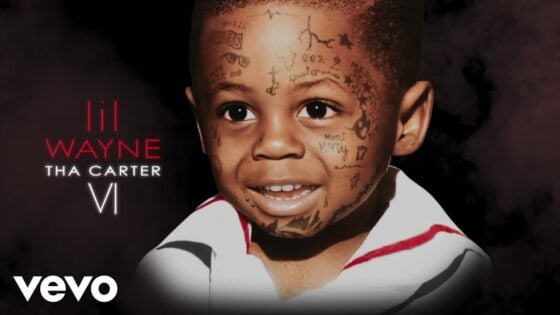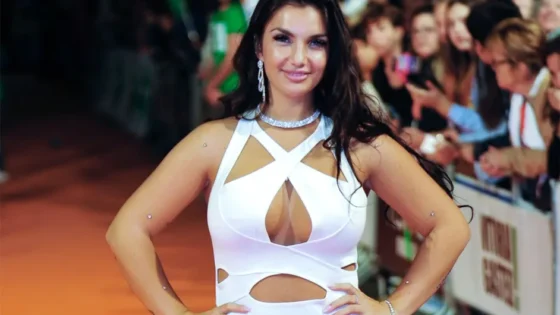Nine films technically have an opportunity to win the award for Best Picture on Sunday, and one is not like the others. In a field top-loaded with intensely intimate, meditative storytelling, Hacksaw Ridge is something of a throwback – a true story of unbelievable heroics in World War II, filmed with a straightforward earnestness not unlike Pearl Harbor — if Pearl Harbor also featured combat sequences more disturbing and grotesque than the beach landing in Saving Private Ryan.
This is not meant to be a review of Hacksaw Ridge, which has problems but is mostly an inoffensive, by-the-numbers-retelling Desmond Doss’ heroics in the titular WWII battle (for our official take, head here). Doss, a man of intense faith, enlisted to serve but would not betray his beliefs by taking up arms, so he became a medic instead. He alone rescued seventy-five soldiers in one night between firefights. It is true, and astonishing.
The film never attempts to explore Doss as an actual person, however, content instead to frame his faith as Hacksaw Ridge‘s true protagonist, and the sole engine of the Doss’ miraculous achievements. The film relies on hackneyed characterization, showing audiences one or two crystallizing events in Doss’ past that inform virtually every subsequent decision he makes. It isn’t engaging, and is wholly detached from the larger reality of how a person develops and behaves. Still, better films than Hacksaw Ridge have built characters on flimsier foundations. This one’s fatal mistake isn’t the simplicity of Doss’ origin story, but the reduction of his character throughout the rest of the movie.
Like much of the work characterizing Mel Gibson’s own second act, Hacksaw Ridge is focused primarily on the power of faith. Doss is a Seventh Day Adventist, one who feels compelled to serve despite knowing he can never touch a rifle. His bravery and sacrifice is beyond question; Doss himself, when rebuked by senior officers hypothesizing about his grim prospects as a noncombatant in the Japanese Theater, plainly states that he is ready to die for the cause. For Desmond Doss the character, God, Country, and Family are all that matter – in that order. The film just does not tell us anything more about who he was, assuming that even the strongest believers among us exist as more than simply the sum of their convictions.
It’s clear that Hacksaw Ridge is in awe of Doss’ faith, but the film’s deferential posture doesn’t weaken the drama of his time at basic training. His platoon-mates are rightly wary of his true motivation, and skeptical about the future of any platoon entering a war alongside a conscientious objector. His officers try to run him out of the army, mostly worried that his objections will sow discontent among fellow soldiers. In this segment, Hacksaw Ridge can’t help but focus on Doss’ faith as a target of persecution. The entire boot camp section of the film shows little more than Doss overcoming a series of indignities. Still, his lack of further characterization – partly due to the real man’s incomprehensibly unshakeable beliefs – doesn’t totally devalue the proceedings. This is the film proclaiming the power of faith on an internal level. Doss’ belief – both in his God, and the righteousness of the cause – give him the strength to stand before the hurled insults of his officers and balled fists of his platoon-mates.
It’s worth noting, this part of Doss’ story is not nearly as problematic as the film’s third act. It’s engrossing to see Doss struggling to fit his belief system into the Army’s framework. Surely, however, there could have been a more human element to Hacksaw Ridge‘s main character. Doss’ faith prevents him from firing a weapon, but how does he rationalize the massive loss of life his compatriots are undertaking? There is an alternate-universe Hacksaw Ridge playing in some bizarro cinema right now, investigating Doss’ thought process and exploring what it would really mean to be an active conscientious objector. This Hacksaw, and its irrepressible reverence of faith as the ultimate virtue, resists such prodding, and instead continues to focus primarily on Doss as persecuted figure.
In the actual film’s harrowing third act, messages begin to muddle. When Doss’ platoon begins its assault on Hacksaw, audiences are shown a breathtaking portrayal of combat, without a doubt the film’s most impressive sequence. Men burn alive and are cut in two, legs are turned to spaghetti, men on both sides of the fighting cry in pain and terror. Notably, Doss is largely missing in this segment, except for one or two scenes that show us gun-wielding platoon mates saving his life. Once again, the film has an interesting opportunity to investigate a real paradox — Doss is enabled to undertake his mission only because of the extreme violence of his platoon — but it chooses to move on instead.
The miraculous story of Doss’ rescue mission occupies the film’s last section, when he alone retrieves seventy-five wounded combatants, then lowers them down a sheer rock face to safety. There is no statement about this feat that would constitute hyperbole. It is massive, truly a triumph of the human spirit. Here, though, Hacksaw Ridge begins to blur the boundaries of Doss’ faith, bleeding its effects from internal to external.
Doss asks God repeatedly during his multi-hour solo mission for the strength to find just one more soldier. Surely, Desmond Doss was not the first or the last person to ask God for strength in any endeavor. And like many true believers, he later defers all credit for his achievement to a higher power. The film, though, seems to agree with him in that regard.
After Doss’ night alone on the battlefield, his platoon adopts him as part savior, part talisman. He receives heartfelt apologies from his boot camp terrorizers, and the men decide that they won’t assault Hacksaw again unless Doss is with them. In this way, Doss forfeits whatever humanity he had in the film, and ascends to sainthood; he may as well be a pendant, swinging from the neck of each terrified American Soldier.
Doss’ transformation into a vessel for the holy spirit is completed when the Americans retake Hacksaw Ridge with Doss by their side. It’s in this moment that Hacksaw Ridge stops championing faith as a powerful source of inner strength and resolve, and instead makes the assertion that faith – if bolstered with enough sacrifice and commitment – is a source of outer strength, that one man’s belief can physically tip the scales in armed conflict, that God may choose a side. As the United States army rushes the battlefield once more, American bullets find their targets with greater accuracy. Momentum breaks their way. The Japanese collapse.
Doss is injured in this second assault, then rescued from combat by his fellow soldiers. As he is lowered to safety, the film’s messaging clarifies. Doss, filmed adoringly from below and framed against a brilliant sun, was never meant to be a human character at all. Hacksaw Ridge is ostensibly the untold story of Doss’ heroism, but it can’t help treat that story as a symptom of Doss’ godliness. The true story of Doss’ heroism is only tangentially related to what the film believes to be his crowning achievement: unwavering faith.

































